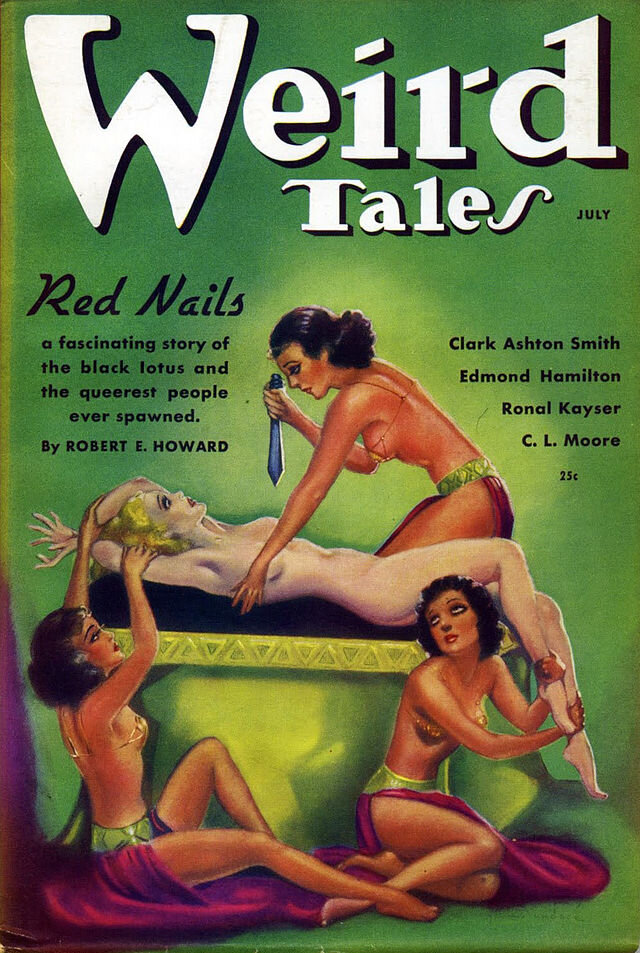Top 5 Depictions of Fantasy Cultures

During our "d-Infinity Live!" show on "Bringing Fantasy Cultures to Life," each co-host was asked to give examples of the best and worst portrayals of fantasy cultures in literature, games, and films. My example of what I consider to be one of the very best such depictions appears in a swords-and-sorcery fantasy novella by Robert E. Howard, and it and four others from written works that I consider to be notable and worth sharing are listed here.
1) Red Nails: In this 1936 novella by quintessential swords-and-sorcery author Robert E. Howard, iconic hero Conan ventures into an ominous citadel located in a desolate landscape and discovers that it is inhabited by two decadent and doomed people, the Tecuhltli and Xotalanc, who are locked in the final phases of a century-long war. Not only does the author provide a terrific snapshot of these two tribes and their gloomy and artificial ecosystem, he creates an unsurpassed model for subterranean races.
2) Out of the Silent Planet: This 1938 science-fantasy novel by C.S. Lewis is the first in a trilogy of three interrelated but very dissimilar books. In it the author compellingly presents three intelligent extraterrestrial species, the Hrossa, a race of seal-like humanoids; the Seroni, a race of giant bird-like people; and the Pfifltriggi, a frog-like race of beings with heads similar to those of tapirs.
3) The Snow Women: In this prequel to the stories chronicling the adventures of swords-and-sorcery heroes Fafhrd and the Gray Mouser, author Fritz Leiber paints a very interesting picture of a northern wilderness society, to include insights into their mores, superstition, and gender roles.
4) Dying Earth: This series of short stories and novels by author Jack Vance is set in a far-future Earth where magic has become ascendant and the sun is on the verge of going out. While he describes many strange communities of people, it is his depiction of the subculture of quirky, neurotic, and dangerous wizards where the author excels (and it bears mentioning, for anyone who does not already know this, that the system of magic Vance describes forms the basis for that adopted for the Dungeons & Dragons role-playing game).
5) The Silmarillion: A list of this sort would be lacking without mention of J.R.R. Tolkein, a scholarly author who actually created functional languages for his fantasy cultures. First published in 1977, four years after the death of its author, The Silmarillion is a detailed history of the universe in which the more familiar The Lord of the Rings and The Hobbit are set. Despite being by perhaps the best-known fantasy author ever, however, this great work is relatively overlooked. But to the extent that Tolkein depicts fantasy peoples in a distinctive way in his more familiar books, he does so in much greater detail in this book, particularly with regard to Elves and the Half-Elven race of Numenor.
These are all classic and fairly old-school examples and many readers will doubtless have ones from more recent works. All of these are seminal stories, however, that have influenced innumerable works that have followed them, and all are also not just worth taking a look at but veritably required reading for anyone presuming to design campaign settings and the peoples that dwell within them. I would, in any event, challenge anyone to provide better examples than these.
Comments and your own examples of the best depictions of fantasy or science-fiction cultures are welcome!




